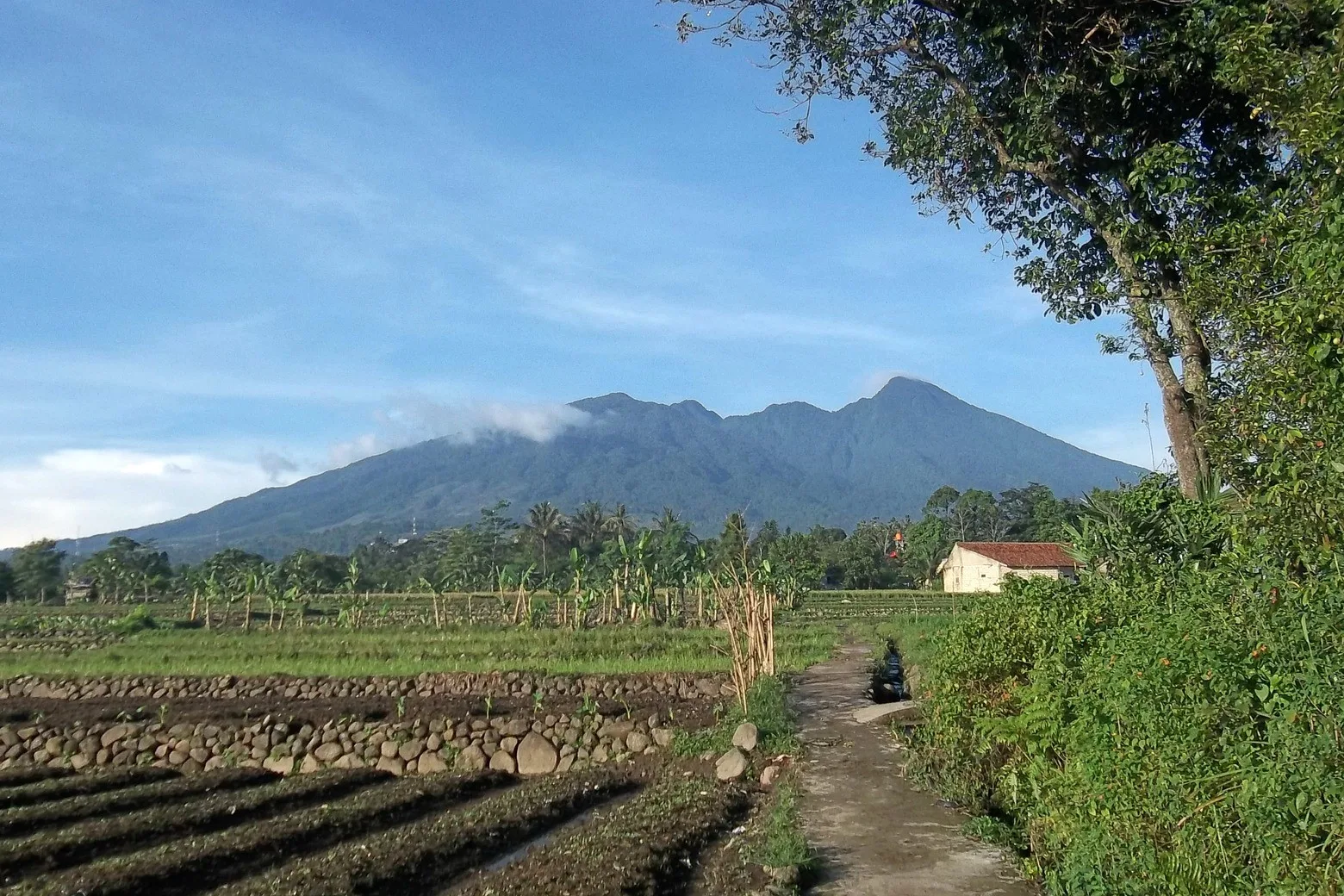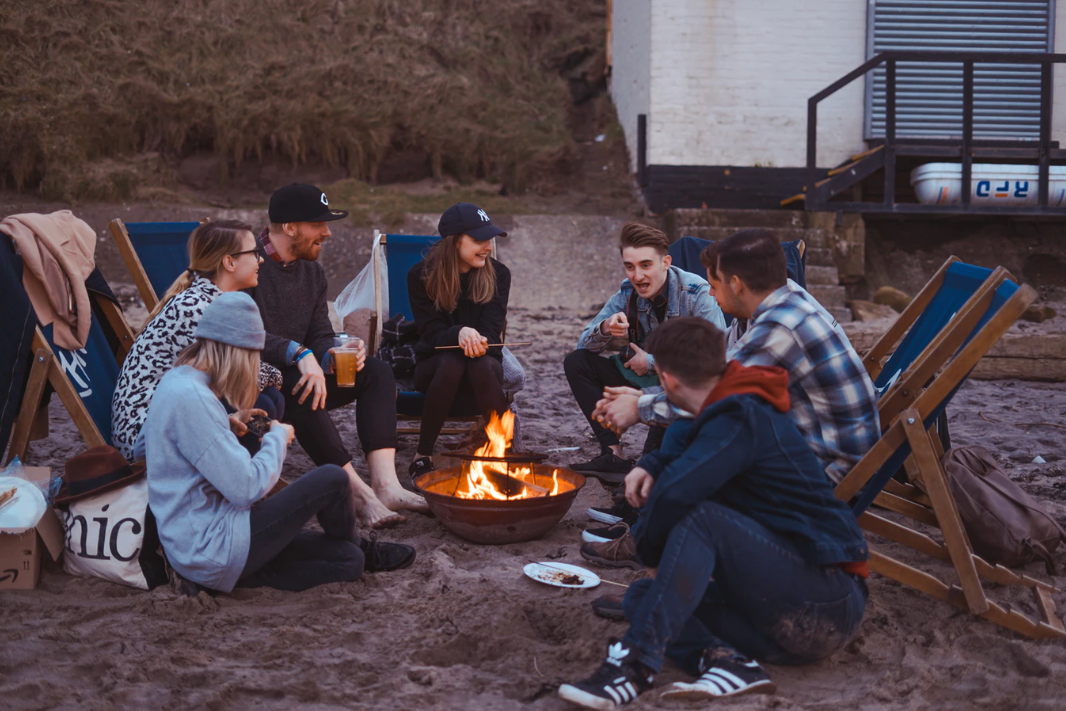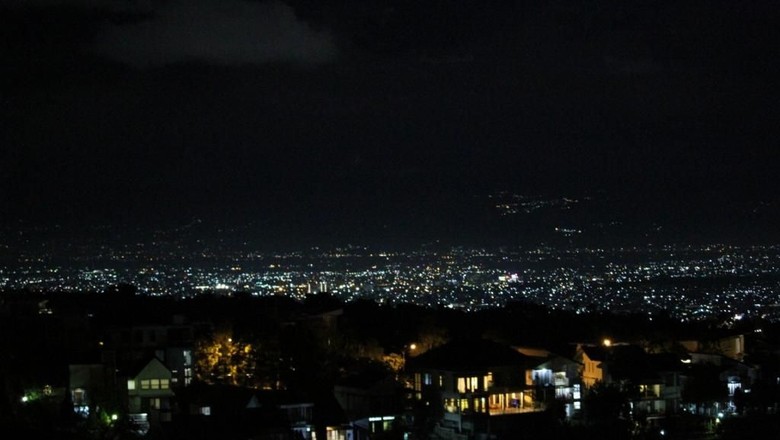Behind the breathtaking landscapes of Dieng Plateau in Central Java, lies a remarkable ancient artistry and religious devotion that is the Dieng Temples. Set against the backdrop of misty hills and lush greenery, this archaeological marvel comprises a collection of intricately designed Hindu temples that echo the rich cultural heritage of Java. Dating back to the 7th and 8th centuries, these temples exhibit a fusion of indigenous Javanese styles with influences from Indian architecture.
Let’s begin the journey through time as we delve into the mystique of these captivating Dieng Temples!
The History of Dieng Temple

Dieng Temple via Wikipedia
Dieng is home to a collection of Hindu temples rooted in Kalingga Kingdom. Considered as the oldest surviving religious constructions in Java, Dieng temples mark the earliest Hindu temples in Indonesia. Despite their historical significance, the actual names of the temples, the detailed history, and the identity of the king responsible for their construction remain shrouded in mystery. To navigate this informational gap, the local Javanese community has given each temple a name based on characters from the Javanese wayang (shadow puppetry) tradition, primarily drawing inspiration from the Mahabharata epic.
The temples are arranged into three distinct clusters: Arjuna, Dwarawati, and Gatotkaca, with Bima Temple standing alone. Check out how the remnants of the past take us back to the ancient time!
Also Read: Explore Dieng: The Best Places to Visit and Dine
The Arjuna Cluster
In 1814, a British soldier stumbled upon Dieng temples which were concealed within a lake encircling the submerged Arjuna cluster. Isidore van Kinsbergen spearheaded an initiative to drain the lake, exposing the temples in 1856. The Dutch East Indies Government subsequently took charge of the restoration endeavor in 1864, accompanied by additional research and photographic documentation conducted by Van Kinsbergen. Let’s walk through the Arjuna Cluster as we delve on its history!
Arjuna Temple
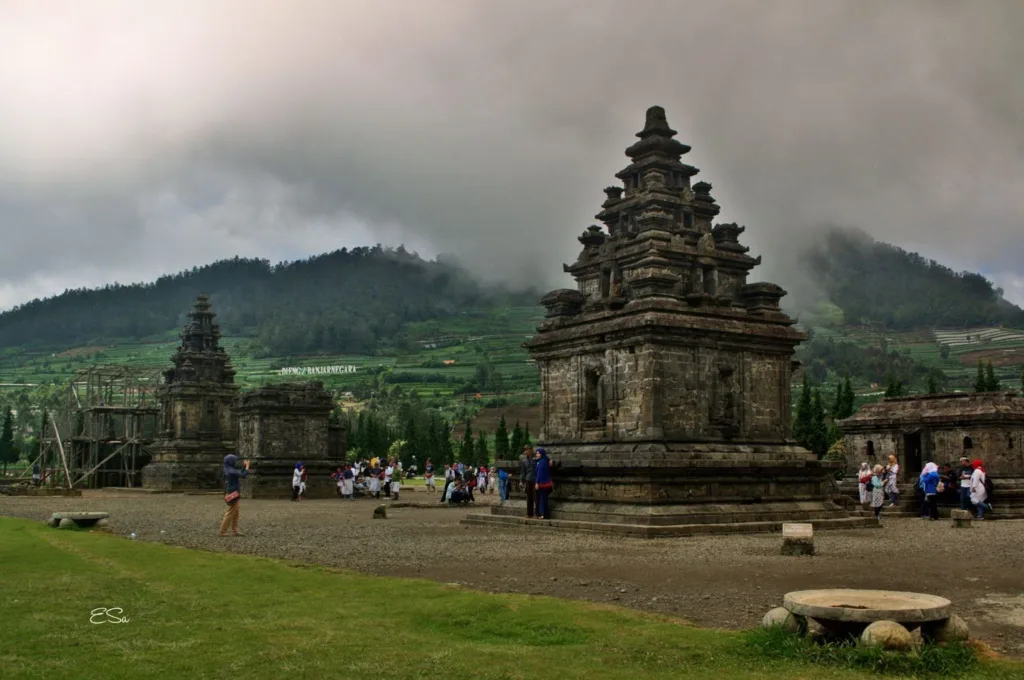
Edi Suprianto via Google Maps
Arjuna Temple is notably well-preserved, especially with the complete reconstruction of its roof section. Although photographs from the 19th century depict some deterioration in the top levels, the overall structure remains intact. As you walk the staircase, dragon-headed sculptures on the edges will welcome your visit as the entrance has a one-meter-wide chamber with a Kalamakara (a dragon’s head) carving above it.
The roof of Arjuna Temple has a pyramid-like shape that tapers upwards, with three levels, each featuring smaller display rooms compared to those on the temple walls. At each corner of the roof, there are decorations resembling pointed crowns, although many of them are currently damaged. Inside the temple, there is a space for offerings, known as yoni, shaped like a four-sided table with a protruding upper part. The top part has a square hole to collect rainwater from the temple’s roof. When the hole is full, water flows through a designated channel, then towards the lingga, and finally directed outside the temple. Such a beauty of human work!
Also Read: 3 Days in Bunaken: An Island Escape Unveiled
Semar Temple
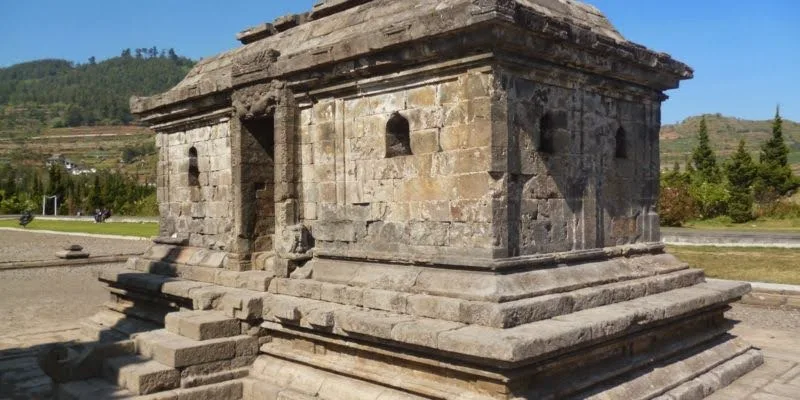
Semar Temple via Dieng Places
This small but wide construction goes by the name Semar, another modest yet remarkable temple in the cluster. There are assertions that it bears resemblance to India’s Parasurameswara Temple, sharing a common architectural form resembling a pendapa, which is a traditional Javanese meeting room. Additionally, it is suggested that Semar Temple served as a venue for various religious ceremonies conducted by the Brahmana caste or priests.
Semar Temple measures 3.5×7 meters, making it comparatively smaller than other temples. Its roof, with a pyramid-like shape known as limasan, lacks decorative elements on the apex. The temple has a rectangular form resembling a Perwara or a sidekick temple. Only a few carvings, specifically Kalamakara, adorn the vicinity of the entrance. Small windows are present on each side of the east walls. Internally, the temple is devoid of any notable features. Still, you can enjoy taking pictures with the temple!
Srikandi Temple
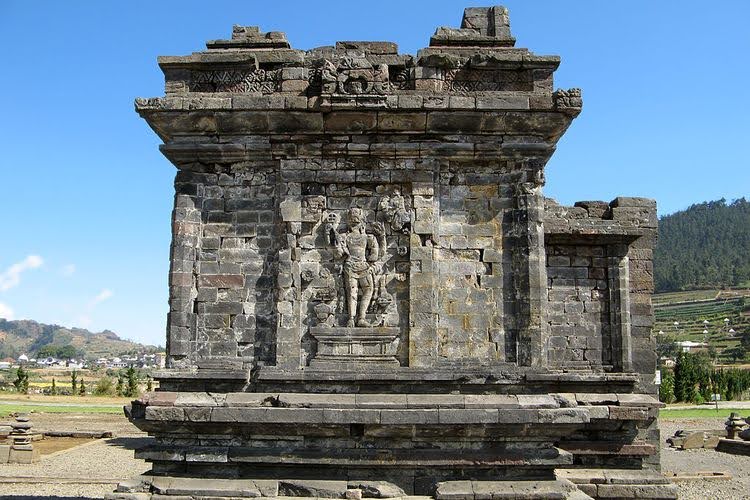
Srikandi Temple via Wikimedia Commons
Srikandi Temple is situated to the south of Arjuna Temple, stands in a square plan of 3.84×3.84 meters. The temple’s front lacks decoration or a display chamber, instead it shows a slightly protruding entrance.
Despite some damage at the entrance, both upper and lower doorways are still discernible. Above the door, there is a Kalamakara‘s headdress. A seam divides the area between the legs and the body of the temple, extending to the corners and adorned with pillar-like ornaments resembling those on a wooden structure. Notably, Srikandi Temple features a unique Trimurti relief sculpture depicting the three main Hindu deities; Vishnu, Shiva, and Brahmana. Although the relief sculptures have incurred some damage, the attributes of the gods can still be recognized on the walls.
Also Read: 6 Secret Waterfalls for a Magical Trip in Sembalun, Lombok
Puntadewa Temple
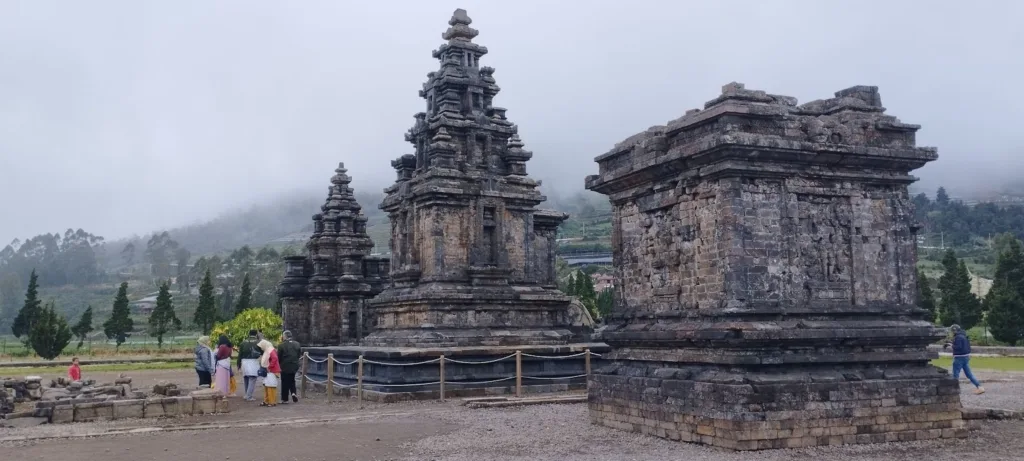
Wahyu Kuncoro via Google Maps
Puntadewa Temple is not large, but it exhibits a taller appearance, elevated on a stacked 2.5 meters.
When you walk inside, the space is narrow, with a damaged yoni in the spout section. On the remaining three sides, there are windows framed with Kalamakara decorations and a curtain of tendrils, similar to the door frame. Approximately half a meter outside the temple’s base, stones are arranged around the foothills. If you notice, the temple’s roof is elevated and takes the form of a meru, consisting of three levels with a peak resembling a beautiful two-tiered lotus!
Sembadra Temple
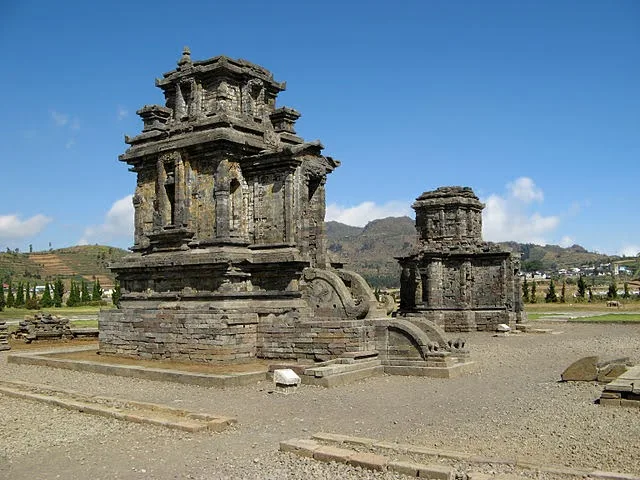
Sembadra Temple (right) via Wikimedia Commons
Sembadra Temple appears to resemble a multi-storey structure due to its cube-shaped roof, nearly matching the temple’s size. Unfortunately, the top of the roof has been damaged, obscuring its original form.
Sembadra Temple is relatively small, measuring 4.75×5.50 meters, with a 50 cm high square-shaped. As you navigate the temple, noticeable protrusions form niches resembling viewer booths in the middle of the south, east, and north sides. While the entrance is equipped with a viewer booth on the west side. The presence of booths and niches imparts a polygonal appearance to the temple’s body. Rumor has itu that the temple holds a profound mystical aura. Until recently, it serves as one of the places of worship for the main deity, Shiva!
Also Read: The Ultimate Guide to Manado’s Thrilling Adventures
The Gatotkaca Cluster
The Gatotkaca cluster comprises five temples: Gatotkaca, Setyaki, Nakula, Sadewa, and Gareng temples. Presently, only Gatotkaca Temple remains standing, while the other four have succumbed to ruins.
Gatotkaca Temple
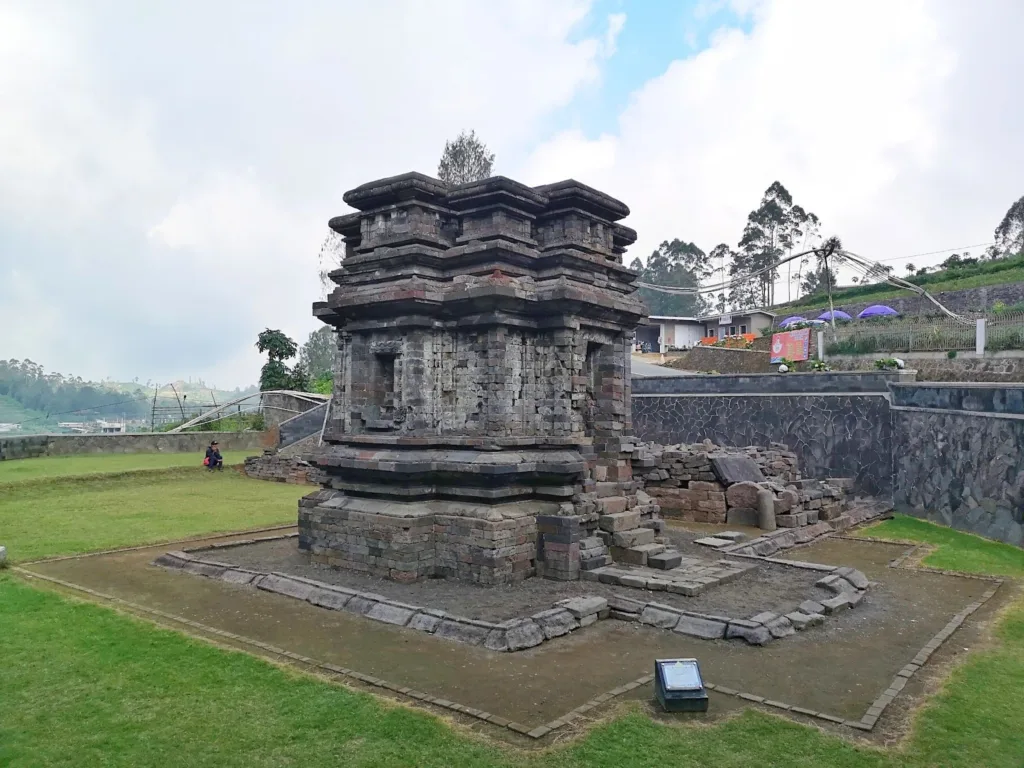
Faisal Reza Sukmawan via Google Maps
Situated to the west of the Arjuna Temple Cluster, Gatotkaca Temple is linked by a 1.5 meters trail, ascending around 300 meters along the roadside leading to the temple.
The one-meter tall temple is constructed with two layers and follows a square floor plan. In the middle of the south, east, and north sides, there are sections forming niches for viewer booths. The entrance, decorated with a distinctive makara, shaped like a giant (Kala) without a lower jaw, is positioned on the west side. The stairs in the facade are sheltered within a viewer room inside the temple. You can enjoy the remnants of yoni structures and designated spaces for placing candles as illumination in each corner of the building.
The Dwarawati Cluster
The Dwarawati group originally included four temples–Dwarawati, Abiyasa, Pandu, and Margasari temples. However, at present, only Dwarawati remains relatively preserved, while the others have deteriorated into ruins.
Dwarawati Temple

Mukti Mkh via Google Maps
Dwarawati Temple is situated to the north of the other temples in Dieng highlands, precisely at the base of Mount Prahu.
Stands at 6 meters tall, Dwarawati Temple has a rectangular plan of 5×4 meters. It exhibits a style and elements akin to Gatotkaca temple, featuring a roof with an angular tower and intricate anthef decorations. The curved roof frame is embellished with antefixes, with carvings depicting human heads.
Dwarawati Temple is furnished with a viewer wall on each side, both on the outer walls and inside the temple chamber, where relugas serve as statues. While this temple may be less recognized by tourists compared to others in the Dieng plateau region, it remains a significant place of worship for local residents!
Also Read: Semarang Trip on a Budget: Affordable Destinations to Discover
Bima Temple

Aryadi Darwanto via Google Maps
Bima Temple stands out among the temples in the Dieng Plateau due to its unique architecture of Indian styles.
Standing at 8 meters tall, Bima Temple boasts a 6×6 meters square foundation. Its Sikhara-like structure incorporates influences from North Indian architectural styles, as seen in its tower decorations. While the horseshoe-shaped niches were influenced by South Indian styles.
Stands alone in a single main structure without ancillaries, the building exhibits a three-horizontal-level structure, similar to certain temples in India. The roof features niches with head reliefs called kudu, a distinctive feature not found in other Indonesian temples. It was previously housed 24 kudu statues, with 13 remaining today, each weighing 15 kg!
Bobocabin Dieng: When History Meets Modern Amenities
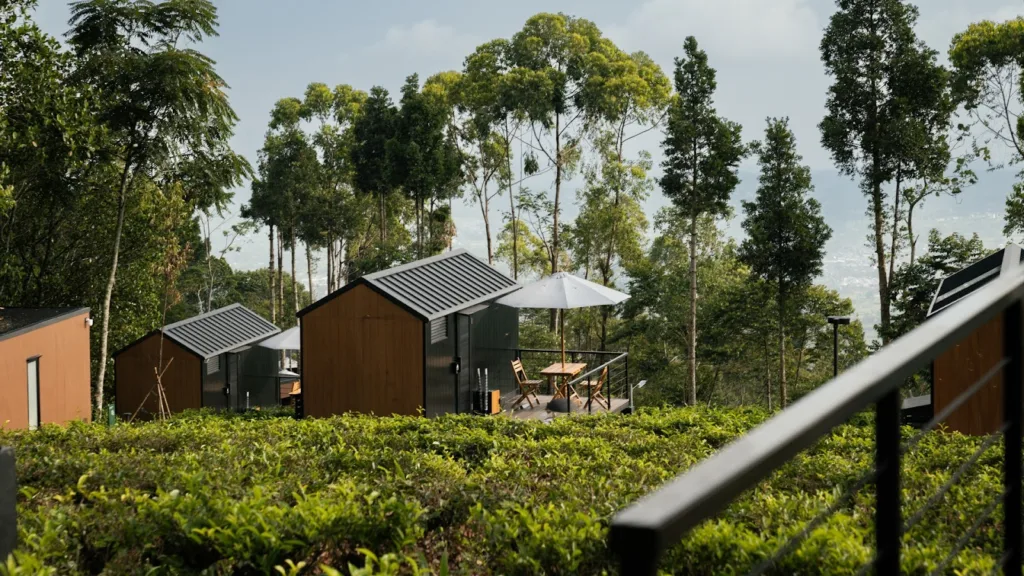
As we conclude our exploration of Dieng Temples, we marvel at the resilience of these ancient temples that have withstood the test of time. The intricate carvings, unique architectural styles, and mystical ambiance of the temples provide a glimpse into the cultural tapestry of Central Java.
To uplift your historical walk and ensure a comfortable stay amidst the allure of Dieng, rest at your best temporary abode, Bobocabin Dieng. Nestled in the heart of this enchanting landscape, Bobocabin Dieng offers a serene retreat, providing the perfect complement to your exploration of these inspiring temples. As you pack your bag to begin the journey in the magic of Dieng, secure your cabin from this app!
Writer: Ratna Asih Setyaningrum
Header image by: Aryadi Darwanto via Google Maps





